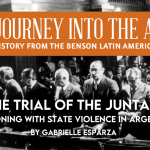
For graduate students in History, comprehensive exams (also known as orals, qualifying exams, or comps) are a crucial milestone on the way to finishing the PhD. Comps are often stressful and overwhelming, but it’s also an opportunity to read widely in your field and beyond. I completed my exams in Fall 2021. In the year leading up to my oral defense, I read 160 books and articles on Latin American history from the colonial period to the recent past. I rushed through many books, but some captivated my attention and compelled me to slow down. They represent scholarship at its best. The following five books are titles I enthusiastically recommend from my comps lists. They’re fresh and innovative and encouraged me to think about my own scholarship in new ways.
1. Adair, Jennifer. In Search of the Lost Decade: Everyday Rights in Post-Dictatorship Argentina. Oakland: University of California Press, 2020.
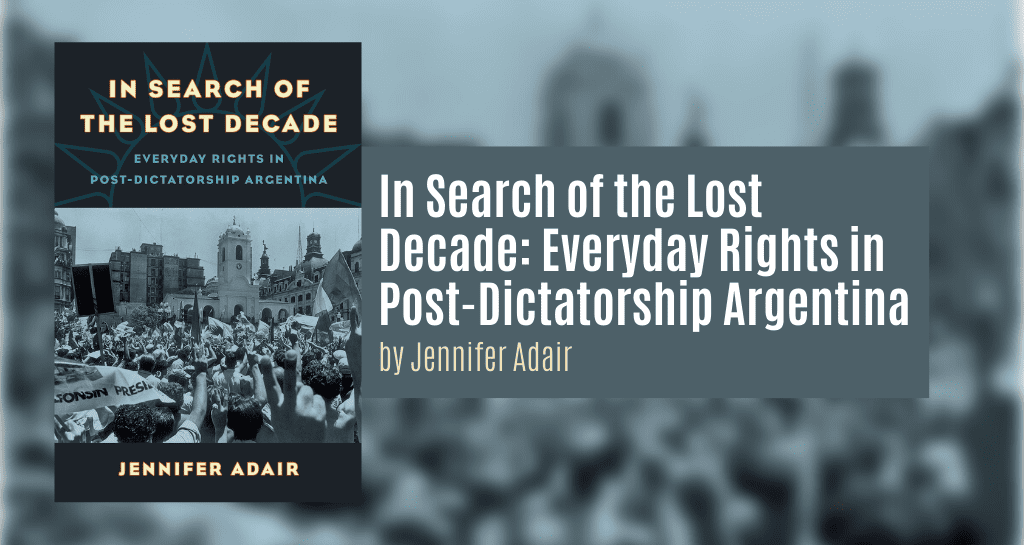
In Search of the Lost Decade reconsiders Argentina’s transition from military to civilian rule by examining how the Alfonsín administration defined a just, democratic society. Alfonsín blended human rights discourse with broader promises of material well-being and equitable national development. Moving from the presidential palace to the streets of Buenos Aires, historian Jennifer Adair foregrounds the political transformations in everyday experiences to understand how ordinary citizens engaged with emerging discourses on political, social, and human rights. She organizes the text thematically and chronologically and uses food as a narrative thread. In moving from the breakdown of authoritarian rule to the 1989 riots, Adair argues that supermarkets, banks, and breadlines served as an important space for ordinary Argentines to engage and challenge the promises of material well-being promised by the new democratic president. Ultimately, she concludes that the unfulfilled promises of Alfonsín’s comprehensive rights agenda “legitimated proposals for the full-scale implementation of neoliberalism over the course of the 1990s” (6).
2. Atencio, Rebecca J. Memory’s Turn: Reckoning with Dictatorship in Brazil. Madison, WI: University of Wisconsin Press, 2014.
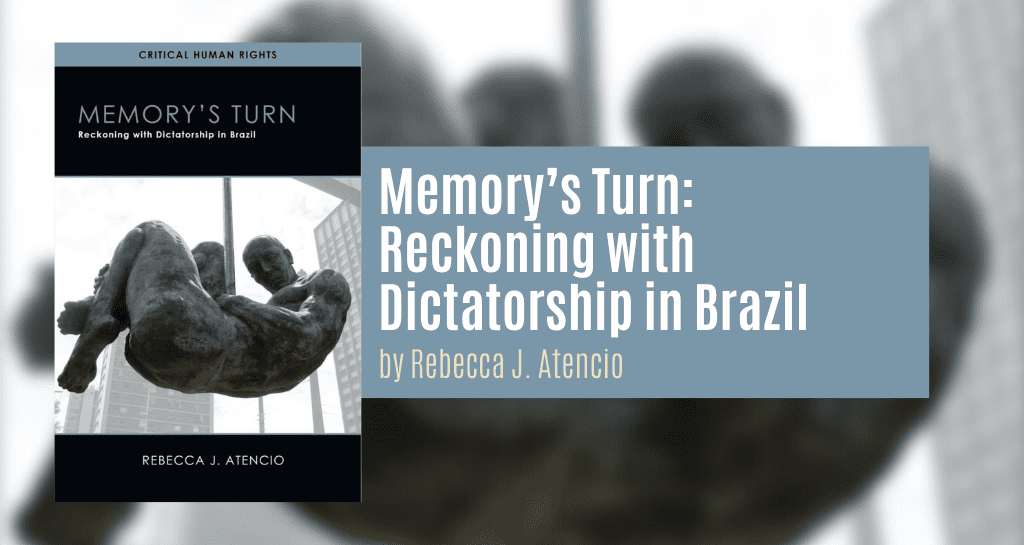
Memory’s Turn seeks to understand the dynamic relationship between transitional justice mechanisms and exceptional cultural works (literature, television, film, and theater). Atencio’s innovative approach bridges two distinct fields: memory studies and transitional justice studies. Her study asks readers to consider whether activity in one realm affects outcomes in the other. However, Atencio does not argue there is a causal relationship between artistic-cultural production and institutional mechanisms. Instead, she contends that interplay between the two realms can “magnify and prolong the impact of both and thereby lay the foundation for further institutional steps” (8). In order to study the interplay between cultural production and transitional justice, Atencio first selected key institutional measures and then identified “linked” works. She considers cultural and institutional acts linked when they launch around the same time, and the general public begins to associate the two events with one another. This creates what Atencio defines as an “imaginary linkage.” Once the public has paired cultural and institutional mechanisms, individuals or groups can leverage the connection in order to promote their agenda. Atencio refers to this multi-part process as a “cycle of cultural memory” (6-8). Ultimately, Atencio concludes that the linkage between cultural works and institutional mechanisms can foster wider public engagement and new efforts to reckon with the past (125).
Read my full review on Not Even Past here.
3. De la Fuente, Ariel. Children of Facundo Caudillo and Gaucho Insurgency During the Argentine State-Formation Process (La Rioja, 1853-1870). Durham: Duke University Press, 2000.
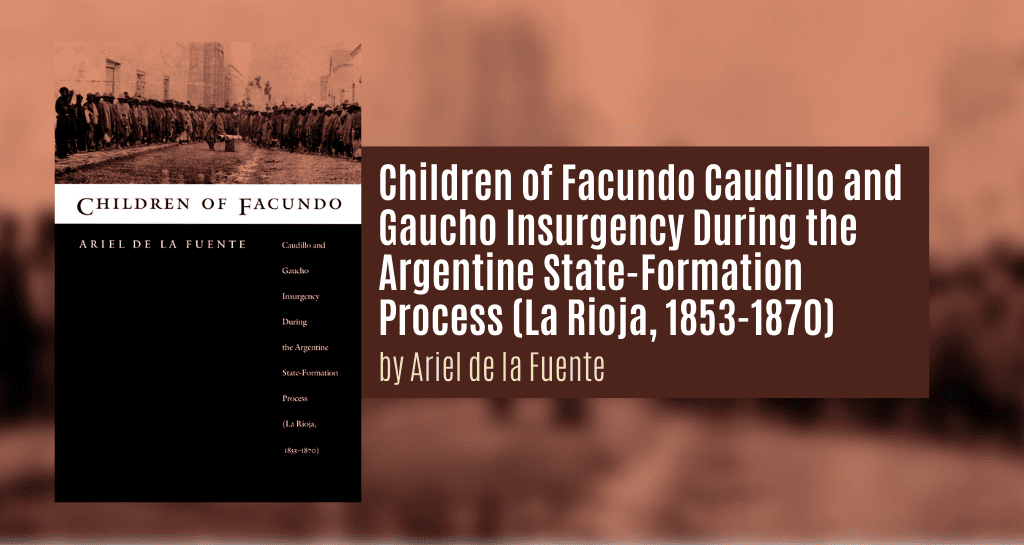
Children of Facundo explores nation-building process in the northwestern province of La Rioja, Argentina, an important site of caudillo-led rebellions in the nineteenth century. Facundo Quiroga, the caudillo immortalized by writer and statesman Domingo Sarmiento, ruled La Rioja from 1822 to 1835. This archetypal caudillo influenced local politics for decades, and Children of Facundo explores the rural political culture that developed through years of resistance and rebellion. Historically, La Rioja remains one of the poorest provinces in Argentina. Widespread poverty, limited employment opportunities, and lack of access to land meant that caudillos could easily recruit with promises of security, food, and pay during rebellions. However, de la Fuente maintains that racial and religious conflicts also motivated political affiliations. Using La Rioja as a lens into caudillismo, de la Fuente explores why rural peasants participated in rebellions and how they engaged with dominant political ideologies of the nineteenth century. He concludes that many participated in mobilizations for economic reasons, but they also joined for emotional and cultural dimensions. Using oral and written records of gaucho participation, de la Fuente illuminates the personal attachment individuals developed to caudillos. He asserts that the masses constructed myths around local leaders. These stories and attributed characteristics shaped how followers believed a caudillo should behave. The use of folklore in addition to quantitative data drawn from land censuses and judicial and notary records makes Children of Facundo particularly innovative.
4. Fischer, Brodwyn. A Poverty of Rights: Citizenship and Inequality in Twentieth-Century Rio de Janeiro. Stanford: Stanford University Press, 2008.
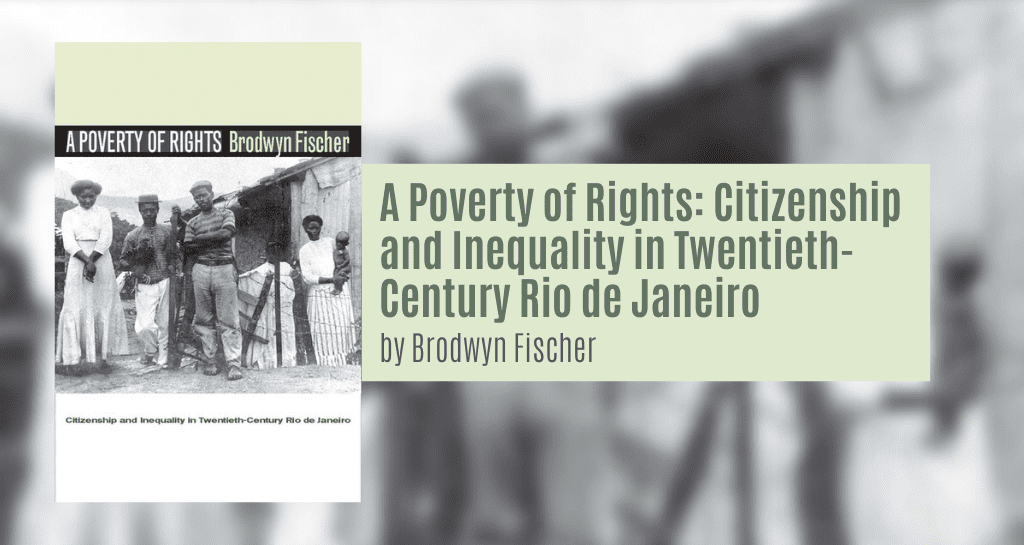
In A Poverty of Rights: Citizenship and Inequality in Twentieth-Century Rio de Janeiro, Brodwyn Fischer traces the history of Rio de Janeiro’s urban poor in order to examine the contradictory manner in which incomplete enfranchisement emerged from processes that sought to expand citizenship and legal rights. Divided into four parts, the book takes a thematic approach to the study of citizenship and inequality. Each section examines how the urban poor interacted with a specific field of Brazilian law during the middle decades of the twentieth century: urban planning and regulatory; labor and social welfare; criminal justice; and property and possession. The thematic structure highlights the similarities across institutional boundaries, and each case study details an expansion of legal rights that the very poor struggled to claim. Written legal codes often communicated utopian visions of social and economic citizenship that the state could not deliver. As a result, legislation from the mid twentieth-century promised an expansion of social and civil rights, but ultimately, the poorest Cariocas continued to exist on the margins of the law’s protections and benefits.
5. Roth, Cassia. A Miscarriage of Justice: Women’s Reproductive Lives and the Law in Early Twentieth-Century Brazil. Stanford, CA: Stanford University Press, 2020.
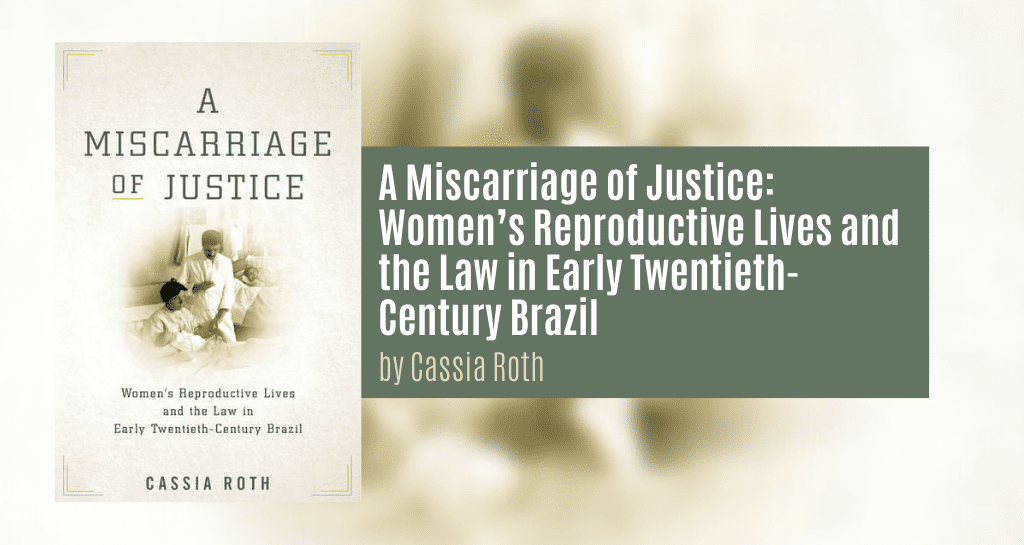
Historian Cassia Roth examines legal and medical policy regarding women’s reproductive health in Rio de Janeiro between the 1890s and the 1930s in A Miscarriage of Justice. The bulk of her study relies on 193 police investigations and court cases from the city of Rio de Janeiro and 39 cases from the State of Rio de Janeiro and the Supreme Court. Drawing on these sources, Roth claims that the state focused on criminalizing women’s attempts at fertility control while doing little to improve maternal-infant health outcomes. The increased surveillance and prosecution of abortion and infanticide led to a punitive culture around women’s reproduction that disproportionately affected poor women. Roth is careful to note that political, social, and economic factors constrained women’s reproductive options. Many of the women investigated for fertility control faced desperate situations. They often lived in extreme poverty, already had children, or had become pregnant as the result of rape. Rio de Janeiro offered few, if any, social programs to help poor or unmarried mothers, so some women practiced abortion or infanticide to exert control over their reproductive lives. Considering the limitations imposed by socioeconomic realities, Roth defines women’s reproductive practices in early-twentieth century Rio de Janeiro as negotiations within the structural violence that governed their lives. Thus, she maintains that we should understand the practice of abortion and infanticide as the result of rational decision-making even if restrictive social and economic circumstances shaped these choices. Roth highlights difficult stories, but she tells them with great empathy. In this way, she restores agency to the women and tells a feminist history of reproduction.
Gabrielle Esparza is a fourth-year Ph.D. candidate at the University of Texas at Austin. She is a historian of Latin America, with a focus on twentieth-century Argentine history. Her current research interests include democratization, transitional justice, human rights, and civil military relations. Gabrielle holds a B.A. in History and Spanish from Illinois College and received a Fulbright English Teaching Assistantship to Argentina in 2017. At the University of Texas at Austin, Gabrielle has served as a graduate research assistant at the Texas State Historical Association and contributed to the organization’s Handbook of Texas. She served as co-coordinator of the Symposium on Gender, History, and Sexuality in 2020-2021. Currently, she is Associate Editor of Not Even Past.
The views and opinions expressed in this article or video are those of the individual author(s) or presenter(s) and do not necessarily reflect the policy or views of the editors at Not Even Past, the UT Department of History, the University of Texas at Austin, or the UT System Board of Regents. Not Even Past is an online public history magazine rather than a peer-reviewed academic journal. While we make efforts to ensure that factual information in articles was obtained from reliable sources, Not Even Past is not responsible for any errors or omissions.
